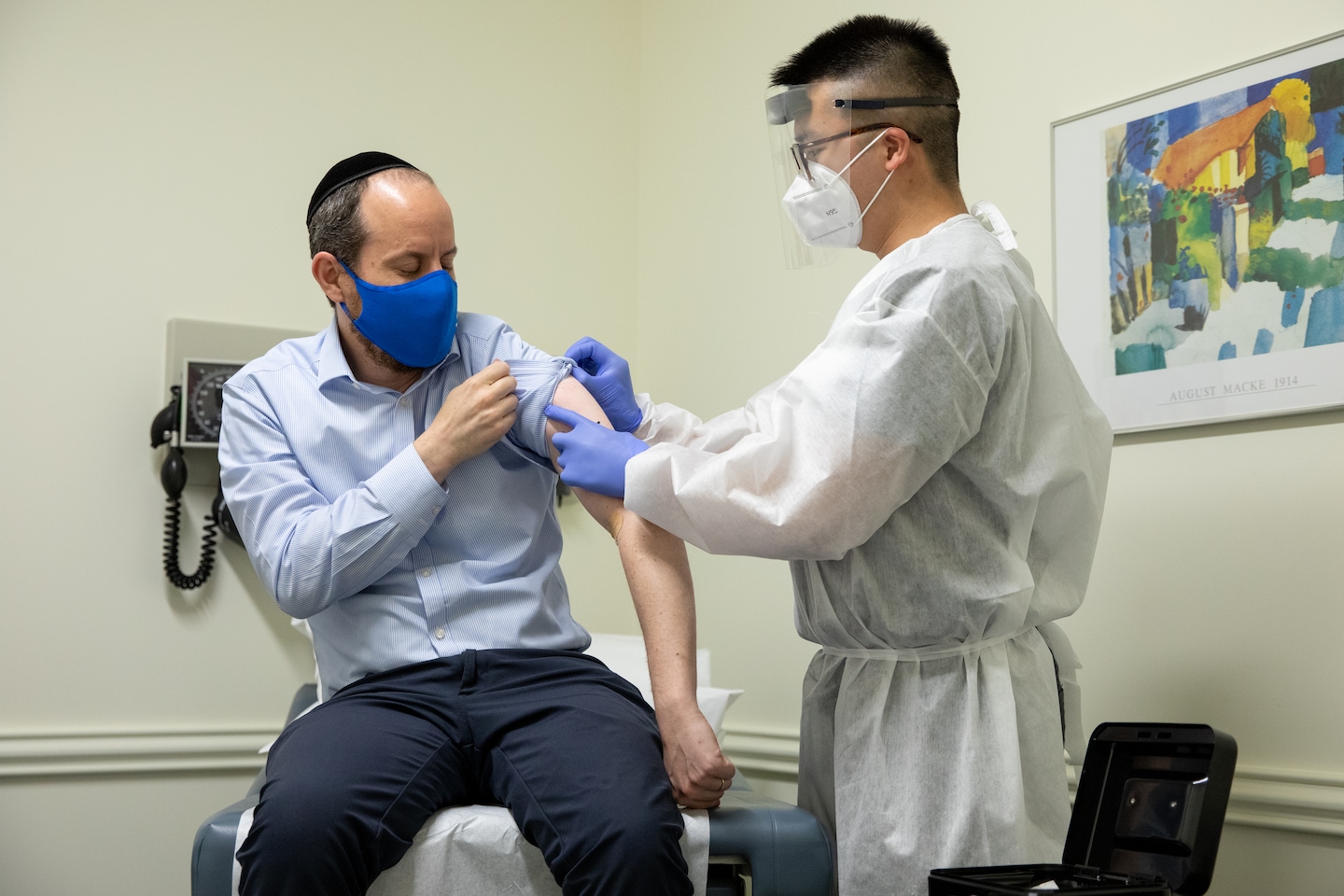CDC asks 4 states and a city to draft coronavirus vaccine distribution plans

Those plans will be shared with other states to help them with vaccine distribution planning. The discussions with states this week offer some of the first details of the federal government’s plans at a time when information shared by the administration has been limited and often confusing. The United States is planning the largest vaccination campaign ever undertaken, a massive proposition requiring extraordinary coordination, planning and communication.
U.S. officials said this week that Operation Warp Speed, the administration’s effort to expedite development of coronavirus countermeasures, is on track to deliver tens of millions of vaccine doses by January.
In the planning discussions, one of the hottest topics involves freezers. At least one vaccine candidate is expected to require storage at very cold temperatures, about minus-70 degrees Celsius. A top CDC official told state immunization officials Wednesday that states probably won’t be expected to buy special freezers. But if a vaccine is approved by the Food and Drug Administration that requires such cold storage, states should prepare sites for mass vaccination clinics because doctors’ offices aren’t likely to store and administer those shots.
U.S. officials are close to awarding contracts for commercial distributors capable of handling storage and transport of such coronavirus vaccines, said Paul Mango, deputy chief of staff for policy at the Department of Health and Human Services. Although President Trump has said repeatedly the military will deliver vaccines, the Defense Department “is not actually going to be distributing or delivering the vaccines itself,” Mango said at a briefing for reporters Thursday. The Defense Department will handle logistics of manufacturing, including acquisition of raw material, establishing factories and training workers.
“With few exceptions, our commercial distribution partners will be responsible for handling all the vaccines,” Mango said in an email Thursday. In some cases, the commercial distributors may provide vaccine to private organizations, such as mobile vaccination units that go to nursing homes, he said.
In the months ahead, state and federal officials will need to figure out how to transport and store vaccine, how to identify priority groups who will receive the first doses and how to keep track of individuals who may need to have a second dose, if necessary.
North Dakota officials said they have been working for weeks on a plan. In addition to a strategy for vaccinating the general population, they are working with CDC on ways to reach American Indian populations, according to a statement from Molly Howell, North Dakota’s immunization program manager. Native Americans and other communities of color have been disproportionately affected by covid-19, with higher rates of hospitalization and deaths than White Americans.
But those communities also tend to have lower rates of immunization than Whites, and experts said better strategies are needed to increase uptake of a covid-19 vaccine.
In a letter dated Aug. 4 and sent to state immunization and preparedness officials, CDC directed states to make several assumptions for their planning.
Vaccine distribution will be managed centrally but may be handled through more than one distributor. Distribution may be expanded to include additional health-care organizations, such as pharmacies, hospitals, public-health clinics and doctors offices.
States should assume vaccine will be distributed directly to providers. Covid-19 vaccine providers must enroll with their jurisdiction’s immunization program to receive doses. Needles and syringes and limited amounts of face masks and face shields will be distributed to providers “proportionately by the federal government at no cost,” the letter sent to states said.
The amount of vaccine allocated to each jurisdiction will be based on several factors, including population size, the letter states.
Recommendations on which groups should receive vaccines will probably change, depending on the characteristics of each vaccine, supply and the disease’s epidemiology.
In a meeting with state immunization officials and other experts Wednesday, Nancy Messonnier, who leads CDC’s National Center for Immunization and Respiratory Diseases, stressed the need for urgency and flexibility in completing plans by Oct. 1, the earliest she said vaccines could be available.
“We need states to have draft plans even if the draft plans aren’t perfect,” she told the group. CDC and other agencies will be providing state officials with additional technical expertise, she said. “But frankly, we’re sort of running out of time. If the vaccine is going to be available by Oct. 1, which it may be, we need to have plans before then,” Messonnier said, acknowledging that “everything about this event is unprecedented.”
Other U.S. officials have said such an October scenario is extremely unlikely.
“That would be astounding,” National Institutes of Health director Francis Collins said during the Thursday HHS briefing. The only way that could happen, he said, is if one of the phase 3 trials underway was able to enroll volunteers “at absolute record speed,” and the vaccine were deemed safe and effective by FDA even before all the volunteers signed up.
“That’s a number of unlikelihoods piled on top of each other. I would not expect to see, on the basis of what we know scientifically, that we’d be at the point where FDA would have the chance to make such a judgment until considerably later than Oct. 1,” Collins said. “Maybe November, December would be my best bet.”
Read more:






